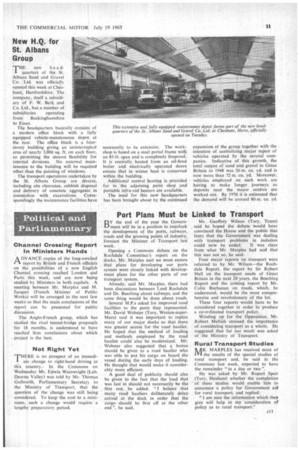New H.Q. for St. Albans Group
Page 13

If you've noticed an error in this article please click here to report it so we can fix it.
THE new h e a d
quarters of the St. Albans Sand and Gravel Co. Ltd. was officially opened this week at Cheshunt, Hertfordshire. The company, itself a subsidiary of F. W. Berk and Co. Ltd., has a number of
subsidiaries operating from Buckinghamshire to Essex.
The headquarters basically consists of a modern office block with a fully equipped vehicle-maintenance depot at the rear. The office block is a fourstorey building giving an uninterrupted area of nearly 3,000 sq. ft. on each floor, so permitting the utmost flexibility for internal divisions. No external maintenance to the building will be required other than the painting of windows_ • The transport operations undertaken by the St. Albans Group are diverse, including site clearance, rubbish disposal and delivery of concrete aggregates in connection with excavations. Correspondingly the maintenance facilities have necessarily to be extensive. The workshop is based on a steel portal frame with an 85-ft. span and is completely fireproof. It is centrally heated from an oil-fired boiler and electrically operated doors ensure that in winter heat is conserved within the building.
Additional central heating is provided for in the adjoining paint shop and portable infra-red heaters are available.
The need for this new headquarters has been brought about by the continued
expansion of the group together with the intention of centralizing major repair of vehicles operated by the several companies. Indicative of this growth, the total output of sand and gravel in Great Britain in 1948 was 26 rn. cu. yd. and is now more than 72 rn. cu. yd. Moreover, vehicles employed on such work are having to make longer journeys as deposits near the major centres are worked out. By 1970 it is estimated that the demand will be around 80 m. cu. yd.




















































































































